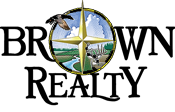By Chris Ginn
I’m always hesitant to vocalize that burping sound I hear so many television hunters make whenever they want to stop a deer.
Will it come out sounding like the cracking voice of a pubescent Casanova?
The lead singer of a death-metal band?
Or maybe a turtle having sex with a shoe?
The possibilities of what it could sound like paralyze my vocal cords.
What it will sound like makes me wonder if I should even try it at all.
When the last buck I killed strutted into the oat patch looking like he was ready to sow his own wild oats, it came out pure and silky smooth — much like my late grandmother’s belch.
Hers — which she was not shy about letting fly — started with the letter D and crescendoed into a velvety, resonating din that made one take notice.
Thankfully, my best imitation of my grandmother stopped that buck dead in its tracks.
As I approached the dead deer, another concern crossed my mind.
Had I shot a buck that was too young?
Since this was on private property, I really had no one to answer to but myself.
Still, kind of like how Ray Scott made me feel guilty about every fried bass filet I every ate, I felt a twinge of remorse that perhaps I should have let this one go.
A little while later at the cleaning shed, there was some question as to how old this buck was. The longer the discussion carried on, the younger the buck became.
“One thing’s for sure,” said my friend helping me skin the deer. “He’s as old as he’s going to get.”
That’s when it hit home for me that there is no such thing as catch-and-release hunting. When you kill a deer, it’s as old as it’s going to get.
The only way to let that deer live another year is to let it walk without pulling the trigger.
But in a state with more hunting pressure than just about any other, letting a buck walk means you’re taking a chance that you’ll never see it again — especially if you don’t know your neighboring hunters.
To paraphrase something Dave Moreland said in one of his Grunts & Gobbles columns, Louisiana hunters have to be prepared to shoot as soon as they see a buck that meets their harvest criteria.
Therein lies a paradox.
The only way we can grow bigger bucks is to let small bucks walk. But letting small bucks walk means that shot you just heard your neighbor make might have been the demise of the deer you just dismissed.
So does the possibility that our neighbors might shoot a deer we don’t mean we shouldn’t even try at all.
I think the simple solution is to get to know your neighbors.
I’m fortunate in that I know the owner of every tract of land that surrounds my property.
And by cooperating with each other, we essentially have turned our smaller tracts of land where it is just about impossible to manage for big bucks into a larger tract of land where each of us know the others are making the same management and harvesting decisions.
That doesn’t mean, though, that we don’t harbor some of the if-I-don’t-shoot-it-the-next-guy-will mentality. There’s always that question in the back of my mind when I let a buck walk.
Brett Deshotels, Quality Deer Management Association Acadian branch president for the past three years, knows that mentality well.
Deshotels promotes the QDMA philosophy throughout Louisiana, and he recalled a situation he ran into at a QDMA presentation a few years ago that would have been humorous if it hadn’t been so true.
“It’s a huge misconception to think that if you let a deer walk your neighbor’s going to shoot it,” he said. “There was a guy at the presentation who said this was the exact reason why he killed what he could when he could because he just knew his neighbor was going to kill anything he let walk.”
As it turned out, the guy’s neighbor was sitting five chairs down from him. Through the course of the debate, he realized the hunter who was shooting everything because he was concerned about what his neighbor was going to do was talking about him.
“Only this guy didn’t shoot everything,” Deshotels continued. “So the first guy had a misconception that the QDMA meeting helped iron out. They talked it out and got to know each other — they previously did not know each other — and now they work together for a common goal.”
And getting together to work toward a common goal is exactly what QDMA is all about, Deshotels said.
Rather than an organization promoting giant bucks, QDMA’s main goal is to educate hunters about better deer-herd management.
“QDMA is more about growing a healthy herd,” Deshotels said, “which means they help you manage for the biggest and healthiest deer your particular property is capable of producing. Big bucks are a possibility, but )QDMA is not going to trump local genetics).”
Deshotels has seen firsthand how effective managing for quality deer can be. Twenty years ago, when he was a kid, he had access to what amounted to a cattle pasture with no deer.
“Some landowners in the area tried some different programs like CRP, and they saw a few more deer,” he recalled. “And before they even knew about QDMA, they made an effort by implementing an if-you’re-not-going-to-mount-it-don’t-shoot-it philosophy.”
Deshotels and his family didn’t participate in the loose-knit cooperative for the first few years. But when they saw the other landowners starting to kill huge deer, they realized that whatever they were doing was working.”
“We jumped on board and started seeing our own improvement,” he added. “Last year, at this farm in St. Landry Parish, a young man Alex LeBlanc killed a 200-inch deer from my stand.
“We’re not a QDMA cooperative yet, but we’re working on getting it together.”
Although it seems like neighboring hunters could just get together and work out some unwritten regulations on their own, doing so without a thorough understanding of the effects of those regulations could actually be more detrimental than beneficial to a deer herd.
That’s where QDMA comes in to help.
“It doesn’t cost anything to form a QDMA cooperative, and you don’t even have to be a member of QDMA to enlist its help,” Deshotels said. “The first step in forming a QDMA cooperative is going to www.qdma.com and looking up your local branch. There is a branch in just about every part of Louisiana, and you should connect with them. Each branch president has his email listed on the website, so email him and go from there.”
According to Deshotels, QDMA will come in and get local landowners together to do some presentations to help squash some common deer-hunting myths like a cow horn spike will always be a cow-horn spike.
They’ll also stress the importance of shooting does. Although Louisiana isn’t to the point of New York, where deer run all over the roads, keeping a doe population in check helps balance the herd.
“Basically, they’ll educate local hunters as to what to look for when managing for quality and what not to look for, and what to stay away from,” Deshotels said.
But the really cool thing about enlisting QDMA’s help is that the organization will tailor a management plan based on what you want your herd to be.
“Maybe you want to kill bigger deer,” Deshotels said. “Well, if you have an 8-point-or-better restriction and you shoot every 8-point you see, you’ll never have bigger bucks. That’s where QDMA will come in and offer suggestions.”
One of the cooperatives to which Deshotels belongs has documented six different 8-point bucks on 320 acres that have been managed for four years.
“Of those six 8-points, two of them are 2 ½ years old,” he said. “If you’re shooting 2 ½-year-old 8-points, imagine what those deer could be a 4 ½ or even 6 ½.
“An arbitrary rule like 8-point or better is a starting point, but it can be detrimental if you’re shooting a bunch of young deer.”
Old attitudes and ingrained misconceptions die a slow death; however, with the help of QDMA, Louisiana hunters are starting to figure out that there is a great benefit to local deer herds if they work together toward a common goal.
And if that common goal is a healthy deer herd that lives up to its genetic potential, how could any reasonable hunter say no to that?
In fact, the only way we can fail is if we fail to try at all.
Source:http://www.louisianasportsman.com/details.php?id=7523

